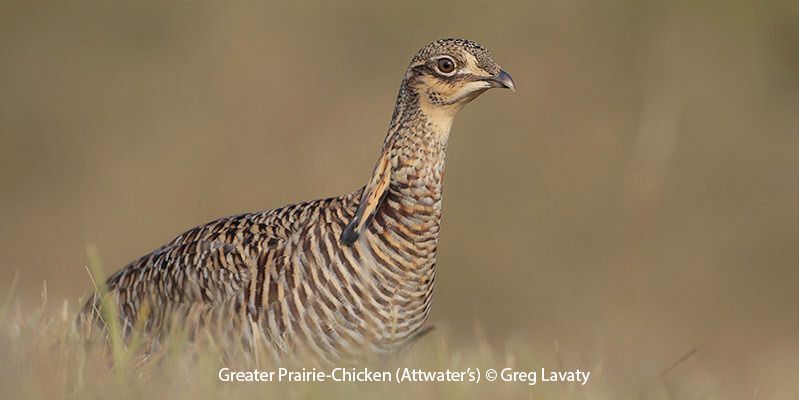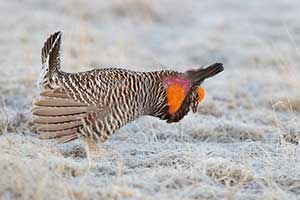
© Greg Lavaty
Greater Prairie-Chicken (Attwater's)
Tympanuchus cupido attwateri (Attwater's subspecies)
Family: (Phasianidae) Grouse
Preferred Habitat: Prairies
Seasonal Occurrence: Permanent resident.
Status: Endangered species
Profile by Will McDaniel: An esteemed finalist of Houston Audubon’s Bird of Houston contest, the Attwater’s Prairie-Chicken is a subspecies of the more common Greater Prairie-Chicken and a native of the coastal grasslands bordering the Western Gulf of Mexico, primarily in Texas and Louisiana. Measuring between 17-18 inches tall and 1.5-2 pounds with a wingspan of 28 inches, these rare ground-dwelling birds display substantial differences between males and females. While both genders are covered with dark brown and white vertical stripes, males stand out with long ear-like head feathers called pinnae and a pair of bright yellow-gold throat patches. These grouses are omnivorous, subsisting on insects, seeds, young grasses, and other tender plants.
As with many grouses, male Attwater’s Prairie-Chickens congregate during the spring into groups called leks in order to attract females, inflating their throat pouches and emitting loud, deep cries and strut about in order to impress them. Hens typically lay a clutch of 10-14 eggs, and chicks stay under their mother’s care for their first six weeks of life. Eggs and chicks are particularly vulnerable to predators such as snakes, foxes, cats, hawks, and especially red imported fire ants, which predate on eggs so enthusiastically that only 30% of eggs last long enough to hatch in the wild.
Once hunted extensively by Native Americans and Texas settlers, the now protected Attwater’s Prairie-Chicken has declined significantly over the past few centuries, as over 99% of their formerly 6 million acre range has been either converted to agriculture or been slowly transformed from coastal grassland into thickets and forests due to the suppression of naturally occurring fires. Red imported fire ants have also greatly depleted the chicken’s food supply, consuming vast amounts of insects in their ceaseless march for food and forcing these birds to work harder and harder for a meal. Today the Attwater’s Prairie-Chicken is mostly restricted to several remnant prairies in Colorado and Goliad Counties, most notably the Attwater Prairie-Chicken National Wildlife Refuge outside of Eagle Lake. While less than 50 birds remained in the wild in 2003, the hard work of conservation organizations such as the Houston Zoo and Texas Parks and Wildlife has brought this number up to 200 as of February 2019 through the release of birds bred in captivity, allowing Texans to continue enjoying their springtime antics for years to come.
-
Cornell Lab of Ornithology
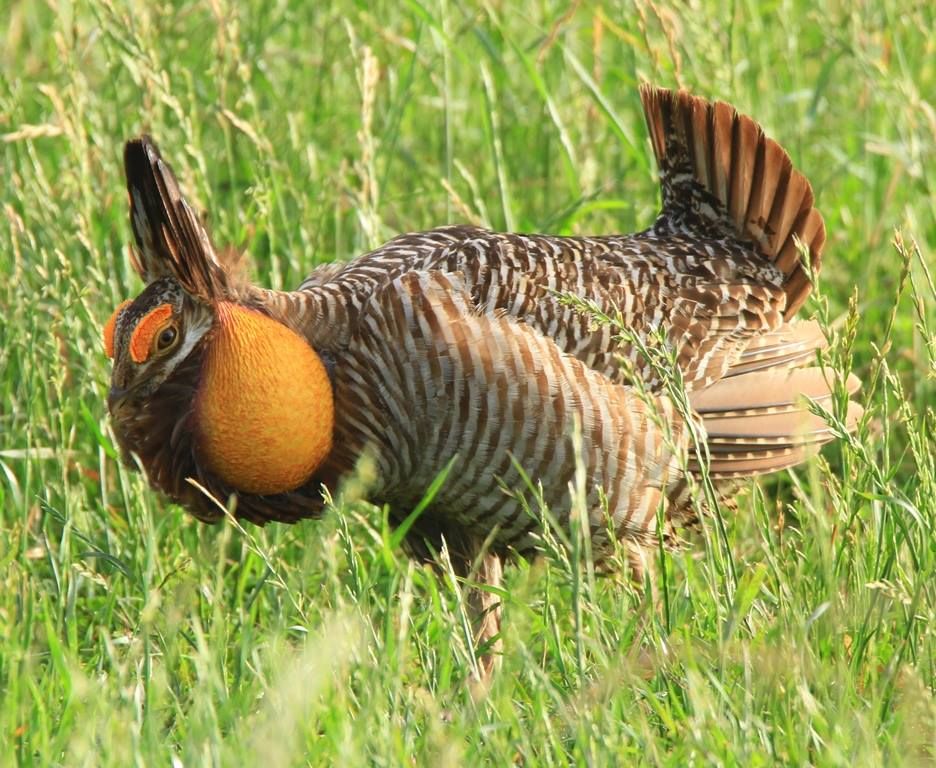
Photo courtesy of US Fish and Wildlife Service
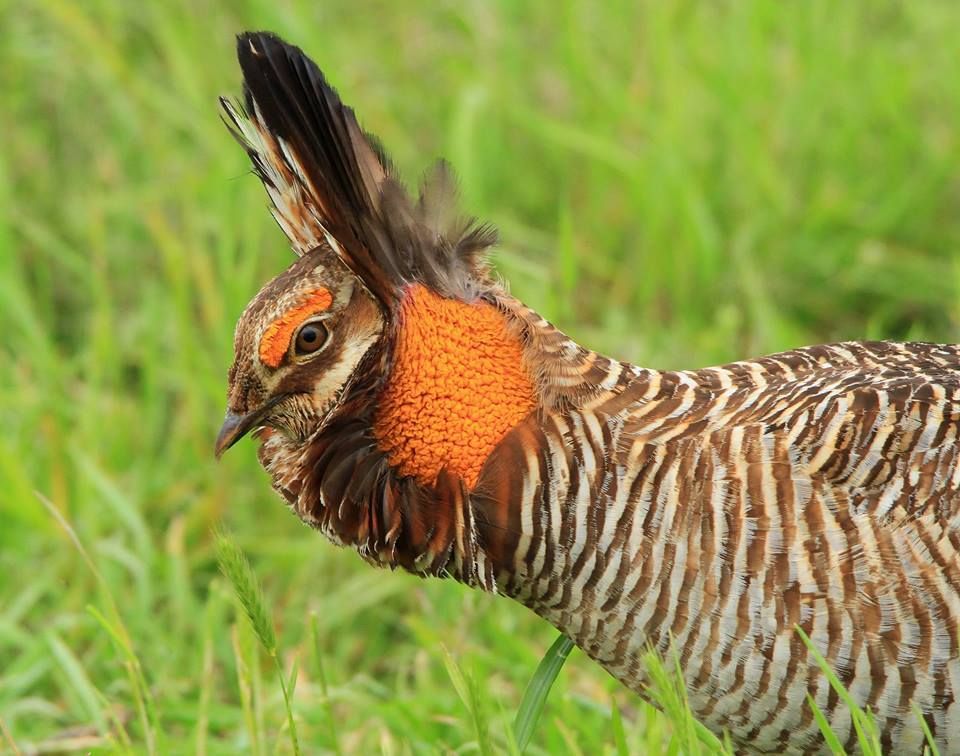
Photo courtesy of US Fish and Wildlife Service
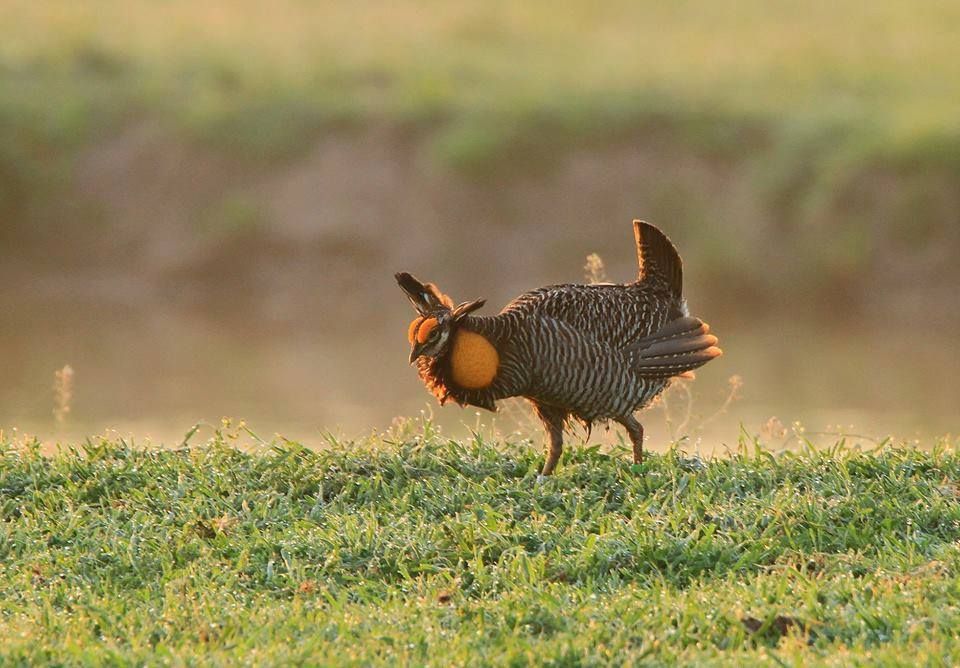
Photo courtesy of US Fish and Wildlife Service
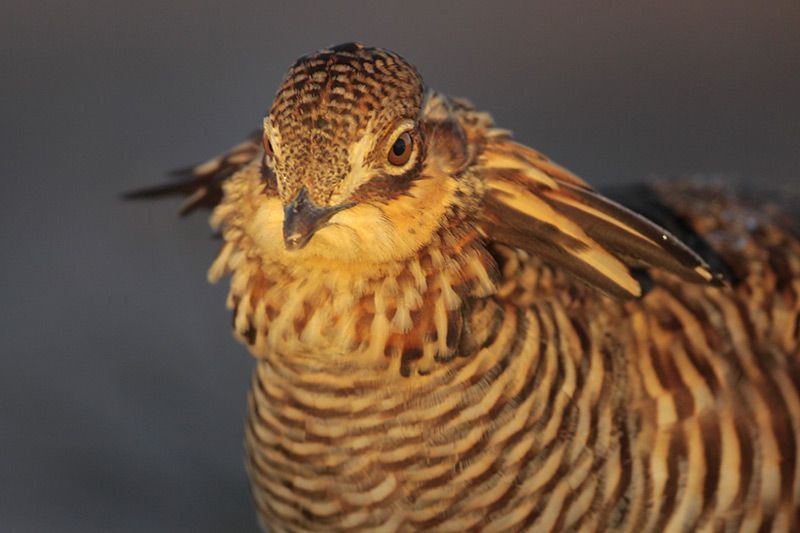
© Greg Lavaty, www.texastargetbirds.com
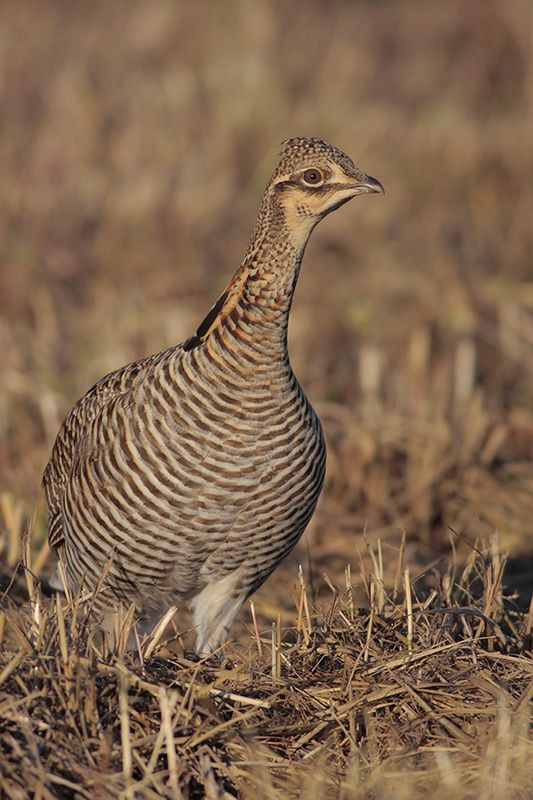
© Greg Lavaty, www.texastargetbirds.com

